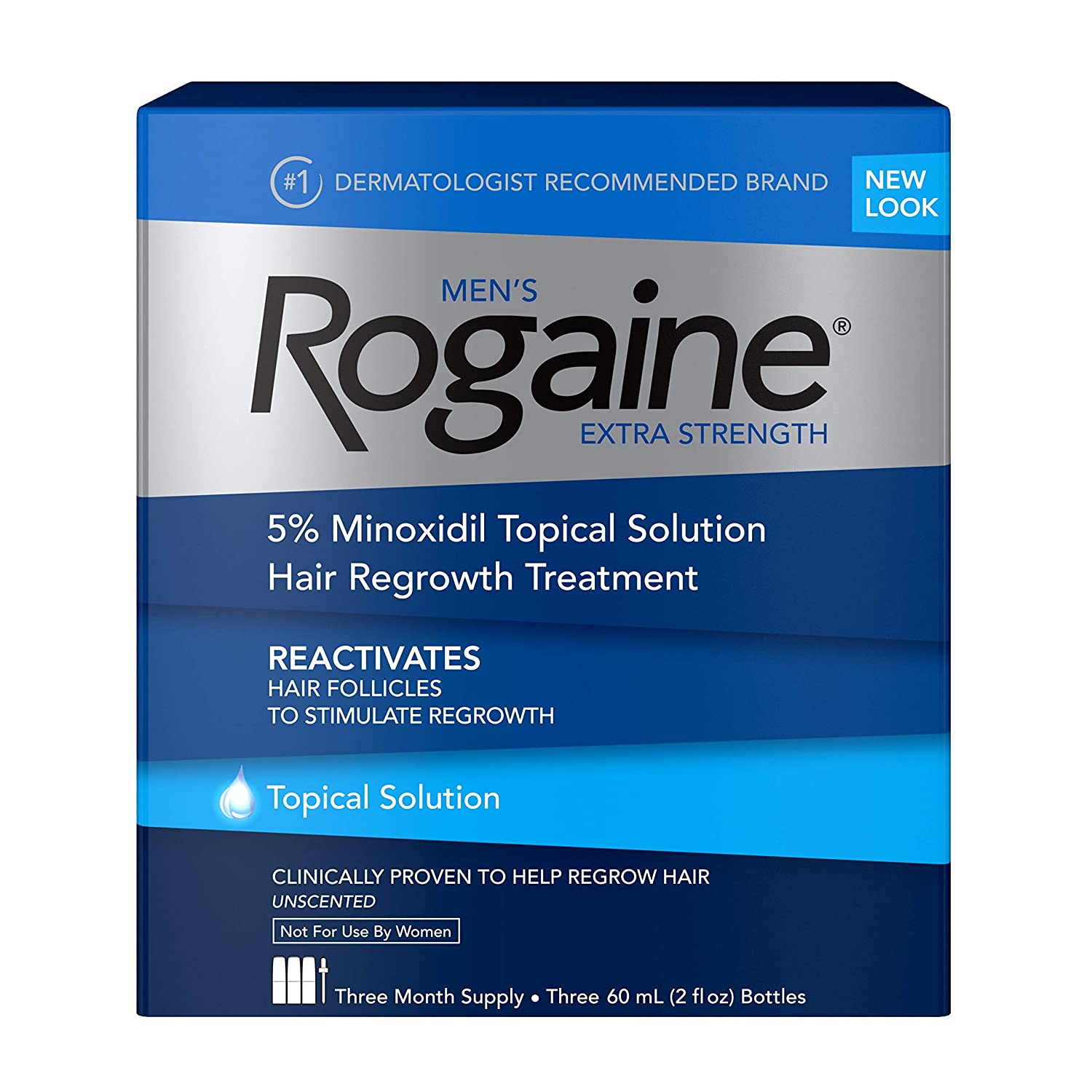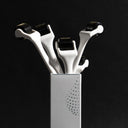Are you struggling to decide between Nutrafol vs Rogaine for hair loss treatment?
Choosing the right solution can significantly impact your hair health journey.
In this comprehensive comparison, we delve into the effectiveness, benefits, and potential side effects of Nutrafol and Rogaine to help you determine which hair restoration method is better suited for your needs.
Table of content
What is Nutrafol?

Nutrafol is a natural supplement crafted to promote healthy hair growth by addressing underlying issues such as stress, hormonal imbalances, and nutritional deficiencies, supporting overall hair health. Gaining quick recognition in the fields of wellness and beauty, Nutrafol adopts a holistic strategy for improving hair health.
Composed of a unique mix of botanicals, vitamins, and minerals, the supplement aims to provide a more thorough solution to hair loss by tackling various root causes.
Its ingredients are scientifically supported to work together in order to reduce inflammation, balance hormones, and fight oxidative stress, offering a well-rounded approach to addressing different types of hair-related issues, whether they are due to hormones, aging, or environmental stressors.
How does Nutrafol work?
Nutrafol addresses multiple root causes of hair thinning with its natural formula, working to reduce scalp irritation, balance hormones, and combat oxidative stress, thereby promoting hair health and encouraging fuller, healthier hair growth.
What are the key ingredients in Nutrafol?
Nutrafol takes pride in its carefully selected blend of natural ingredients, all backed by scientific research, to tackle the complex factors behind hair thinning. Here are some key ingredients that make the formula particularly effective:
- Saw palmetto: Known for its ability to block DHT, a hormone often linked to hair thinning, saw palmetto serves as a potential counter to this common issue.
- Ashwagandha: This adaptogenic herb aids the body in managing stress by controlling cortisol levels, which are known to contribute to hair loss when elevated.
- Tocotrienol complex: A potent form of vitamin E, this element is packed with antioxidants that fight oxidative stress, a factor that can adversely affect the health of your hair.
- Biotin: Commonly referred to as the "hair growth vitamin," biotin plays a vital role in the synthesis of keratin, a protein crucial for maintaining healthy hair.
- Marine collagen: Providing essential proteins, marine collagen helps maintain the structure of hair follicles and encourages healthier hair growth.
- Horsetail extract: High in silica, this ingredient fortifies hair, reducing its susceptibility to breakage and thinning.
- Curcumin: Sourced from turmeric, curcumin offers robust anti-inflammatory properties that contribute to creating a healthier scalp environment conducive to hair growth.
Are there any side effects of Nutrafol?
Nutrafol, a natural supplement, is generally considered safe for most users. However, as with any supplement or medication, individuals can experience side effects. Some potential side effects of Nutrafol include:
- Digestive upset: Some users report stomach discomfort or changes in digestion after taking Nutrafol. This can often be alleviated by taking the supplement with food.
- Allergic reactions: Though rare, individuals might be allergic to one or more ingredients in Nutrafol. Symptoms can include rashes, itching, swelling, or difficulty breathing. Reviewing the ingredient list and consulting a healthcare professional to clarify potential allergens is always wise.
- Drug interactions: As Nutrafol contains a blend of botanicals, vitamins, and minerals, it might interact with other medications or supplements. It's especially crucial for those on drugs or those with underlying health conditions to consult a doctor before starting Nutrafol.
- Hormonal changes: Ingredients like saw palmetto may affect hormone levels, particularly testosterone and DHT. While this is part of its mechanism to combat hair loss, it's essential to be aware of and monitor any changes.
- Cost concerns: This is not a physical side effect but is worth noting. Some users find Nutrafol pricier, and its continuous use can become a financial concern for some.
As your leading source for hair health information over the past 4 years, we never compromise on accuracy. When it comes to your health, you deserve information you can truly rely on - and earning your trust is our top priority.
Here's how Scandinavian Biolabs ensures every piece of content meets the highest standards of accuracy and integrity:
- Credentialed Experts: Our reviewers are actively practicing doctors and medical researchers
- Stringent Reviews: Content undergoes rigorous editing by subject specialists and review by a practicing doctor.
- Evidence-Based: We rely on well-established research from trusted scientific sources like peer-reviewed journals and health authorities.
- Full Transparency: Our editorial standards, writer credentials, reviewer credentials, correction process, and funding are all publicly documented.
- Independent Voice: While we do promote products, we operate in a vacuum to business operations. Our main goal is just an unwavering commitment to providing medically-sound guidance.
You can count on Scandinavian Biolabs to consistently deliver the trustworthy health information you deserve. Read our Editorial Standards.
What is Rogaine?

Rogaine, known generically as Minoxidil, is a topical solution extensively employed in treating hair loss and is one of the leading hair loss treatments designed to regrow hair. Initially developed as a medication for high blood pressure, it was discovered that one of its side effects was unexpected hair growth.
Today, it's one of the most popular over-the-counter products for addressing hair loss, available in different strengths, and used by millions worldwide.
Rogaine operates by extending the growth phase of hair follicles, effectively stimulating hair follicles to increase hair density and slow down hair shedding.
It is applied directly to the scalp, typically twice a day, and has shown effectiveness for both men and women.
While Rogaine doesn't cure baldness, it has been proven to help slow its progression and even regrow some hair in some instances.
How does Rogaine work?
Rogaine, or Minoxidil, works by helping to increase blood flow to the areas of application, typically the scalp. This is believed to extend the hair follicle cycle's anagen phase (or growth phase), leading to longer, thicker hair strands. Additionally, it may increase the hair follicle's size, resulting in thicker hair.
By stimulating these changes, Rogaine helps slow or stop hair loss and can promote regrowth in individuals suffering from pattern baldness or thinning hair.
What are the key ingredients in Rogaine?
Rogaine, known generically as minoxidil, is a topically applied hair regrowth treatment. Its primary active ingredient is Minoxidil.
Minoxidil is the main active ingredient in Rogaine. Minoxidil is a vasodilator that widens (dilates) blood vessels.
Originally developed as an oral medication for high blood pressure, it was observed that patients taking minoxidil experienced increased hair growth as a side effect.
This observation led to the development a topical formula specifically for hair regrowth.
Besides minoxidil, Rogaine formulations may also contain inactive ingredients that serve as vehicles or stabilizers for the active ingredient.
These can include alcohol, propylene glycol, and water, among others. The inactive ingredients can vary based on the type of Rogaine (foam vs. liquid) and its intended demographic (e.g., products for men vs. those for women).
Are there any side effects of Rogaine?
Here are a few side effects of minoxidil, irrespective of its brand name.
- Local irritation: This is one of the most common side effects, resulting in itching, redness, flaking, or a burning/tingling sensation at the application site. The tingling might result from increased blood flow due to the medication.
- Allergic contact dermatitis: Some users may experience an allergic reaction, which can cause similar symptoms to local irritation, including itching, redness, and flaking.
- Anaphylaxis: This is a rare but severe allergic reaction that can cause symptoms like hives, a full-body rash, nausea, vomiting, and swelling of the lips, tongue, throat, or mouth. If these symptoms occur, stopping using the product and seeking emergency medical care immediately is crucial.
- Increased shedding: Often experienced when starting treatment, this is sometimes referred to as 'minoxidil shedding' or 'dread shed.' This phenomenon occurs as inactive hair follicles shed their existing hair for new, healthier growth.
An effective alternative to Nutrafol and Rogaine

After delving into the specifics of Nutrafol and Rogaine, it's clear that both have their strengths. However, if you're seeking a more natural, comprehensive approach, allow us to introduce Scandinavian Biolabs' Hair Growth Routine. Here's why it could be the solution you've been searching for:
Nature-Infused and Gentle:
While Nutrafol and Rogaine focus on specific aspects of hair growth, our Hair Growth Routine is formulated with potent botanicals. This natural approach is designed to be gentle on your scalp and hair, providing effective results without the reliance on harsh chemicals.
Tailored for Individual Needs:
We understand that hair loss is not a one-size-fits-all issue. Our Hair Growth Routine is adaptable to various hair types and stages of hair loss, making it a versatile choice for many looking for a personalized hair care solution.
Commitment to Safety and Environment:
Scandinavian Biolabs is dedicated to your safety and the planet's well-being. Our products are developed with sustainability in mind, ensuring that you can take care of your hair while also caring for the environment.
Guaranteed to Grow:
Backed by clinical trials and customer testimonials aren't enough for us. We went above and beyond to offer a 150-day money back guarantee if you don't see results to ensure you only pay for effectiveness.
Considering a switch or an addition to your hair care regimen? Explore the natural, effective path with Scandinavian Biolabs' Hair Growth Routine and step into a world of healthier, fuller hair.
Nutrafol vs Rogaine: What are the differences?
Both Nutrafol and Rogaine target different aspects of hair loss. Nutrafol is a natural, ingestible supplement that promotes hair health from within, while Rogaine is a topical minoxidil product that stimulates hair follicles for growth.
Here are some of the differences:
Method of action
Nutrafol employs a holistic approach to address potential root causes of hair thinning, such as stress, inflammation, and hormonal imbalances.
Conversely, Rogaine uses minoxidil to directly stimulate the hair follicles, increasing their size and prolonging the growth phase of hair.
Application and form
Nutrafol is taken orally as a dietary supplement, making it a systemic solution that works from within the body. Rogaine is applied topically to the scalp, working externally at hair thinning or loss site.
Ingredients
Nutrafol's formula combines botanicals, vitamins, and minerals such as saw palmetto, biotin, and ashwagandha.
Rogaine's main ingredient is minoxidil, a vasodilator, and other inactive ingredients like alcohol and propylene glycol.
Duration and consistency
With Nutrafol, consistent ingestion over several months is recommended for noticeable results, and it's typically a longer-term commitment.
Rogaine requires regular and consistent application to the scalp, and discontinuation can lead to a reversal of any hair regrowth benefits achieved.
Nutrafol vs Rogaine: Which one is better for you?
If you prefer a holistic, internal approach using natural ingredients, Nutrafol might be suitable. Conversely, if you're looking for a clinically-tested topical solution with a track record of stimulating hair growth directly at the follicles, Rogaine could be the better choice.
"In my practice, I have seen good results from both Nutrafol and Rogaine. Nutrafol may have fewer side effects given its natural ingredients. However, minoxidil in Rogaine is clinically proven to stimulate new hair growth. For some patients, a combination of Nutrafol and Rogaine provides the best outcome," states Dr. Kristopher, MD, FACS.
Conclusion
The journey to reclaiming hair health often presents a maze of options, with Nutrafol and Rogaine standing out as prominent signposts.
Each offers a unique approach: Nutrafol champions the holistic path, harnessing the power of natural ingredients from within, while Rogaine provides a direct, external assault on hair loss with its tried-and-true minoxidil formula.
Both have their merits, and the "best" choice is deeply personal, influenced by individual needs, preferences, and the nature of hair concerns.
FAQs
Can I use both Nutrafol and Rogaine together?
Many individuals use both concurrently, with Nutrafol addressing internal factors and Rogaine targeting hair growth externally. However, always consult with a healthcare professional before combining treatments.
How soon can I see results with Nutrafol vs. Rogaine?
Results can differ. With Nutrafol, numerous users observe significant enhancements in hair quality and thickness within 3-6 months. For Rogaine, some users see results in as early as 2 months, but it can take up to 4 months or more for others.
Are there any age restrictions for using Nutrafol or Rogaine?
Both hair growth products are formulated for adult usage, offering solutions to various hair concerns including postpartum hair loss and age-related thinning. Rogaine is typically recommended for those 18 and older. Nutrafol has specific formulations for different life stages, but it's essential to consult a healthcare provider to determine suitability based on age and individual needs.
Can Nutrafol and Rogaine work together to promote hair regrowth?
Yes, using Nutrafol and Rogaine together can promote hair regrowth. Nutrafol supports hair health from within, while Rogaine works externally to stimulate hair follicles.
How does Nutrafol promote hair health?
Nutrafol promotes hair health by supplying vital nutrients and herbal extracts to support hair growth and reduce thinning.
Is Rogaine effective in promoting hair growth alone?
Yes, Rogaine is effective in promoting hair growth by directly stimulating hair follicles on the scalp.
Can improving hair health support hair growth?
Absolutely, improving hair health with the right nutrients and care can significantly support hair growth.
Resources:
- https://pubmed.ncbi.nlm.nih.gov/12196747/
- https://www.ncbi.nlm.nih.gov/books/NBK482378/
- https://www.ncbi.nlm.nih.gov/books/NBK278957/
- https://www.ncbi.nlm.nih.gov/pmc/articles/PMC2938579/
- https://pubmed.ncbi.nlm.nih.gov/2180995/
- https://pubmed.ncbi.nlm.nih.gov/3549804/







